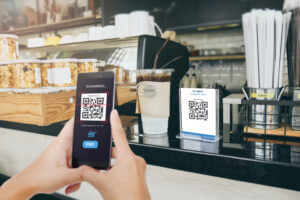
Contactless payments existed before COVID-19, but now, customers expect them everywhere. Restaurants, shops, and other businesses advertise the service on their websites. Articles advise people to use contactless payments when they’re shopping or dining out.
But what is contactless payment in the first place? Why is it so important? And what are your options for offering contactless payments as a business?
Read on to learn about the ins and outs of contactless payments.
What Is Contactless Payment?
Contactless payment is a straightforward idea. In essence, it is an exchange of money without the customer handing the money (or a vessel for money, like a credit card) to the person offering the product or service. For example, paying for an online product with your credit card through a web form is a contactless payment.
Payments with contact include paying with cash and handing over your credit card. These are not contactless payment systems.
Why Use Contactless Payment?
In-person payments are less popular now, especially since COVID-19. While the risks are low, it is possible to transmit the virus through objects an infected person has touched. This can be dangerous for both your employees and customers.
Contactless payment eliminates the risk of transmitting viruses through objects. Protecting your employees reduces the chance of losing team members and having to scramble to find workers. It also makes your customers feel safe and, consequently, more likely to order from or visit your business.
Even outside of safety considerations, contactless payments are useful. They’re faster than paying by cash. Speedier transactions allow businesses to increase the number of transactions they can handle—and cut down on inconvenient customer lines. Plus, contactless payments are more secure. Systems like Apple Pay and near-field communication (NFC) use modern technology to prevent fraud and theft.
Contactless payment has gained traction slowly in past years. While its convenience was appealing to some tech-savvy customers before, its popularity now is making it a must-have for customers and businesses alike.
How Does Contactless Payment Work?
Contactless payment is usually managed through secure, cloud-based systems. The systems use radio-frequency identification or NFC to connect to credit card or bank accounts and charge customers. These systems sometimes require authentication, like a texted PIN code or a sign-in from a third-party app. Some contactless payment systems, primarily in Asia, use QR codes.
In some cases, contactless payments rely on a physical item to relay the information. For example, customers may have to hold their smartphones over a receptor to send over bank details for payment.
What Are Contactless Payment Options?
Credit and debit cards can be contactless payment systems if the cards are not physically handled by another person. Entering your credit card information on a web form, for example, is a no contact payment.
Key fobs, smart cards, smartphones, and smart watches can also be contactless payment systems. They can enable the information exchange that a no contact payment necessitates. For example, some smartphone apps allow customers to scan barcodes to make payments.
Customers can even pay through messaging. For example, Apple Business Chat offers a secure system for paying through their chat. Customers can simply use Apple Pay to make the purchase, all without leaving the original conversation with the business.
A less tech-savvy no contact payment option is relaying credit card information over the phone.
How Can You Make Contactless Payments Easy?
By their very nature, contactless payments are easy. Customers can purchase items from over the internet without leaving their homes. If they do come into stores, they don’t have to pull out their credit cards and hand them over. They can simply tap their phones or other smart objects onto a receptor.
However, customers still have their preferences. For example, be sure to offer Apple Business Chat or Google’s Business Messages. Messaging is a highly popular channel, and offering immediate payments through the channel increases the chances that customers will make payments right when they’re thinking about your product or service.
You can even link Apple Business Chat or Google’s Business Messages to your business texting platform. With this integration, all incoming Apple Business Chat messages and Business Messages will arrive in your shared inbox alongside your other customer messages. Payments are certifiably secure with the support of OAuth and Google Pay. Your team can receive and answer all customer messages in a single place, cutting down on time they would spend switching between platforms.
These small additions make contactless payments even easier—and your customers even more satisfied.
Still asking what is contactless payment? Talk to our team today.




